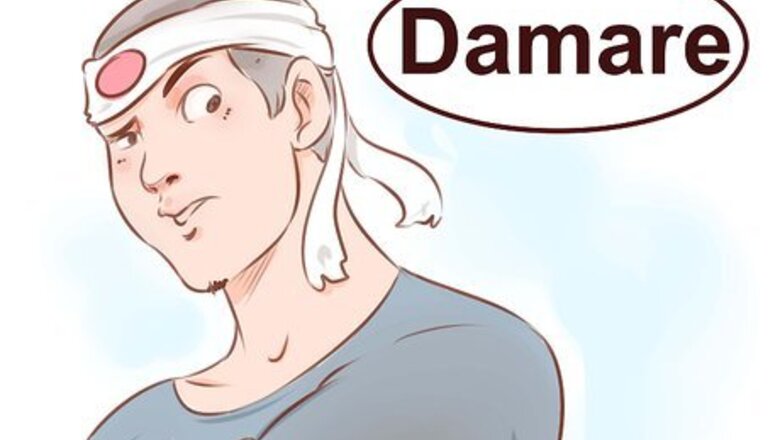
views
Rude Options

Say "damare" as a good all-around "shut up." Try this easy phrase for your everyday "shut up" usage. It's pronounced "dah-mah-ray." "Dah" and "mah" both more or less rhyme with "raw". Note that the r sound used here is light and fast like a Spanish r. The r is pronounced with a light flick of the tongue, almost like an English d or the two ts in the word "butter." In Japanese, this phrase is written "黙れ". If you really want to make an impression, try rolling the r sound at the end of the word. This can be used in Japanese to give great emotion or emphasis to a word. This, too resembles the Spanish rolled r sound.
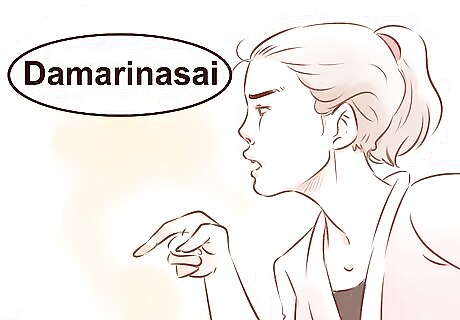
To speak from a position of authority, say "damarinasai." If you want to tell someone to shut up as if you are someone with power over them (like a boss or a police officer), use this option. It's pronounced "dah-mah-ree-nah-sigh." The the first three syllables are just like "damare," only with a long e sound (as in "tea") at the end. "Nah" also rhymes with "raw" and the final "sigh" is pronounced like the English word. The approximate meaning here is "silence!" This phrase is written "黙りなさい".

Say "yakamashī" for a semi-rude form of "you're being too loud." This phrase literally means "noisy," but implies that the person you're talking about should shut up. It's pronounced "yah-kah-mah-shee" (basically how its English form is spelled). The one thing to watch out for is the "shee" at the end — in Japanese, these long vowels at the ends of words are held about twice as long as normal vowels. This can give this phrase an almost "whining" quality to an English ear as the final syllable is held out for something like "yakamasheeee." This phrase is written "やかましい".
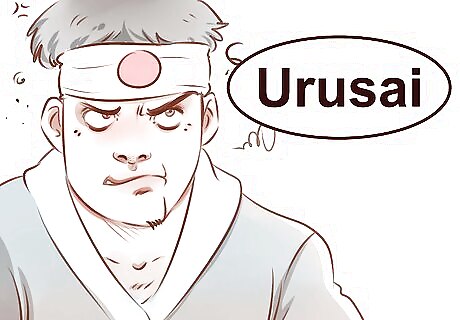
Alternatively, say "urusai." This phrase is very similar in meaning to yakamashī. It's pronounced "ooh-roo-sigh." Note that, in Japanese, the lips don't move forward for the long u sound. Thus, the vowel sounds in "ooh" and "roo" should sound about halfway between the "oo" in "root" and the u in "rut." This can take a little practice. This phrase is written "うるさい". Don't forget to use the light, quick r sound by flicking your tongue against the top of your mouth.
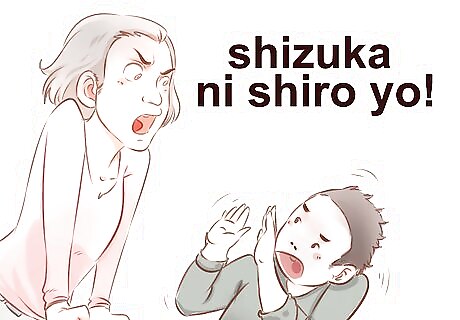
Say "shizuka ni shiro yo!" for an angry "be quiet!" This phrase is basically an abrupt, rude way to ask for quiet. It's a good choice if you've already asked someone nicely to be quiet and gotten no response. Pronounce this phrase "shee-zoo-kah knee shee-roh yo." Remember again that the Japanese u sound is made without moving the lips forward. This phrase is written "静か に 白 よ".
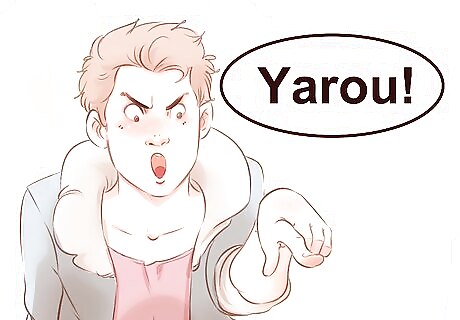
Use "yarou" at the end to emphasize your anger or contempt. Japanese doesn't have true "swear words" the way that other languages do, but it does have insults you can add to your phrases to express how upset you are with someone. "Yarou" is one of these insults — its meaning is somewhat similar to "bastard" or "unpleasant person" in English. "Yarou" is pronounced roughly like "yeah-row". Use the short a sound (as in "apple") for the first syllable — the second is similar to the English word "row. To use this word, add it after you say an adjective like "urusai" or "yakamashi." For instance, "urusai yarou" means, basically, "shut up, you noisy, annoying person." "Yarou" is written "野郎".
Politer Options
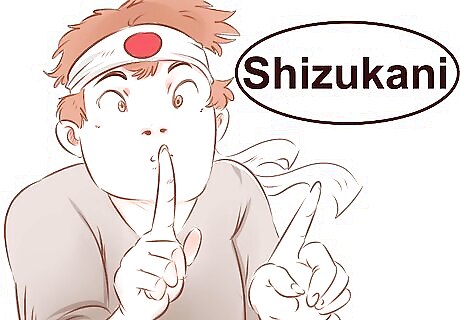
Say "shizukani" for "be quiet." This fairly standard phrase is a neutral way to ask someone to be quiet without any insulting connotations. You may, for instance, hear teachers use this to quiet students during study time. "Shizukani" is pronounced "shih-zoo-kah-knee." The first syllable uses the short i sound (as in "pit"), while the last syllable uses the long e sound (as in "tea"). Note that the last syllable here doesn't have the extra-long emphasis used in "yakamashī." This phrase is written "静かに". This option is still a little abrupt and forceful to use with strangers, so you'll probably want to opt for the phrase below if you want to be extra-delicate.
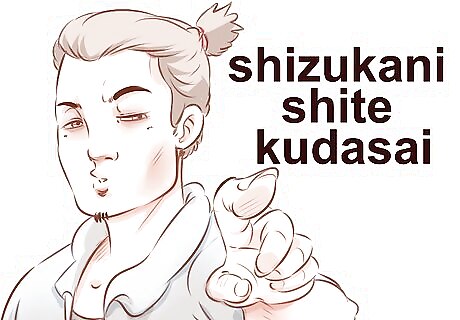
Say "shizukani shite kudasai" for "please be quiet." This is one of the most polite ways you can ask someone else to be quiet — for instance, it's perfect for hushing noisy people around you in a movie theater. "Shizukani" is pronounced exactly as in the step above. "Shite" is pronounced "she-tay" (use the long e sound as in tea for the first syllable). "Kudusai is pronounced "koo-dah-sigh." Once again, the u sound is made without moving the lips forward. This phrase is written "静か に して ください". Remember the word "kudasai" — it's Japanese for "please," so you'll end up using it a lot if you learn more common Japanese phrases.
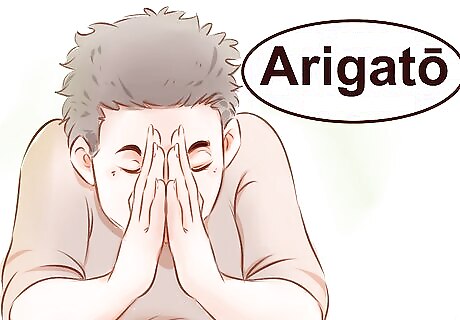
Respond with "arigatō" when you get what you ask for. If you ask someone to be quiet politely and they do quiet down, don't forget to say thanks! "Arigatō" is an all-purpose Japanese way to say "thank you." It's pronounced "ah-ree-gah-toe." Use the delicate Japanese r sound made with a flick of your tongue described above. You'll also want to hold the final o sound a little longer than normal (just like you did for the ī in "yakamashī") This phrase is written "ありがとう". For "thank you very much," you can say "arigatou gozaimasu." "Gozaimasu" is pronounced "go-zye-moss." Note that the second syllable rhymes with "eye" and the u at the end is not pronounced. This phrase is written "ありがとう ございます".




















Comments
0 comment